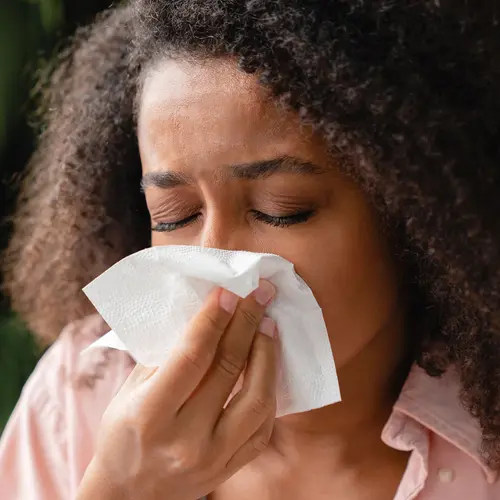That moisturizer your friends swear by left your face red and scaly. The cleaner you've been using for years to make your bathroom sparkle made your hands itch and burn.
For some people, the chemicals in shampoos, cosmetics, and detergents can trigger allergic skin reactions.
Causes
These reactions -- what your doctor calls allergic contact dermatitis -- happen when your immune system overreacts to chemicals that are normally harmless. They can be in products you're exposed to over and over, like cleaners, colognes, hair dyes, and personal care items.
Even if you've used them before, you can still have a reaction.
Cosmetics and personal care products have a lot of potential allergens, things you could be allergic to:
- Fragrances in soaps, colognes, deodorants, body creams, cosmetics, detergents, and tissues
- Preservatives and antibacterials, added to many liquids to keep them from spoiling
- Substances added to thicken, color, or lubricate a product
- Chemicals in permanent hair dyes and other hair products
- Formaldehyde resin, an ingredient in many nail care products
- Sunscreens, often found in cosmetic moisturizers, lip balms, and foundations
Symptoms
Your skin is one of the first places where the warning signs can show up. They often appear 24 to 48 hours later, but can start as late as a week after you come in contact with the irritating chemical.
Each person may have different chemical allergy symptoms. Some of the most common are:
- Red skin
- Scaly patches
- Blisters that ooze
- Burning or itching, which may be intense
- Swelling of the eyes, face, and genital area
- Hives
- Sun sensitivity
- Darkened, "leathery," and cracked skin
The symptoms tend to be worse in the areas of skin that touched the thing you're allergic to. If you get the allergen on your finger and then touch another part of your body, like your face or neck, you can set off an allergic reaction there, too.
Other conditions can cause similar symptoms, so see your doctor to find out what the problem is.
Diagnosis
Often your doctor may be able to diagnose your allergy by doing a physical exam and asking you about your symptoms.
Sometimes, they may suggest you see a dermatologist for a skin test, also called a patch test. They place small samples of chemicals on your back and checks to see if you get a rash.
Keep track of your symptoms. It will help your doctor make a diagnosis. Note details such as:
- What you were doing in the 24 to 48 hours before your outbreak
- Any products you were using before the reaction
- How much of the product you were using and how often
- Where it touched your skin (even places with no symptoms)
- Symptoms you have or had
- Any previous skin reactions
Treatment
You'll want to identify and avoid the chemical that seems to cause your allergic reaction.
If you do come into contact with it, wash your skin with soap and water as soon as possible. If you have the allergen on your hands, don't touch other parts of your body until you've washed your hands.
It may help to take off and wash any clothes or jewelry that might have come in contact with the irritating chemical.
If you use nail care products, make sure the product has dried before you touch your skin.
Got a mild reaction? You can sometimes treat symptoms yourself with over-the-counter medications such as calamine lotion, antihistamines, or cortisone ointments.
See your doctor if you have frequent or severe outbreaks. They can help you find out why it happens and give you prescription medications if you need them.

